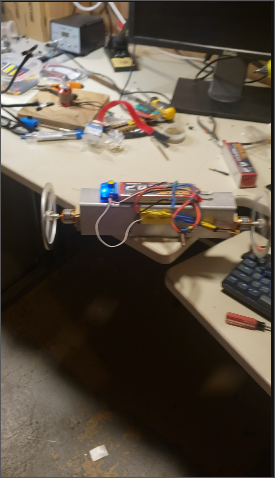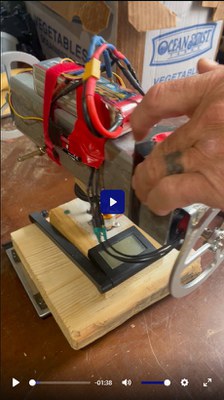Mark I
Design considerations.
The Mark I was our first attempt to debunk the assertion that rotating a pair of high speed disks around an axis perpendicular to their common axis of rotation would create a measurable force itself parallel to the axis of rotation of the pair.
I had two 125 mm diameter aluminium wheels I bought online, similar to what I later had water jet cut from 1/8 inch mild steel by Nanaimo Sheetmetal.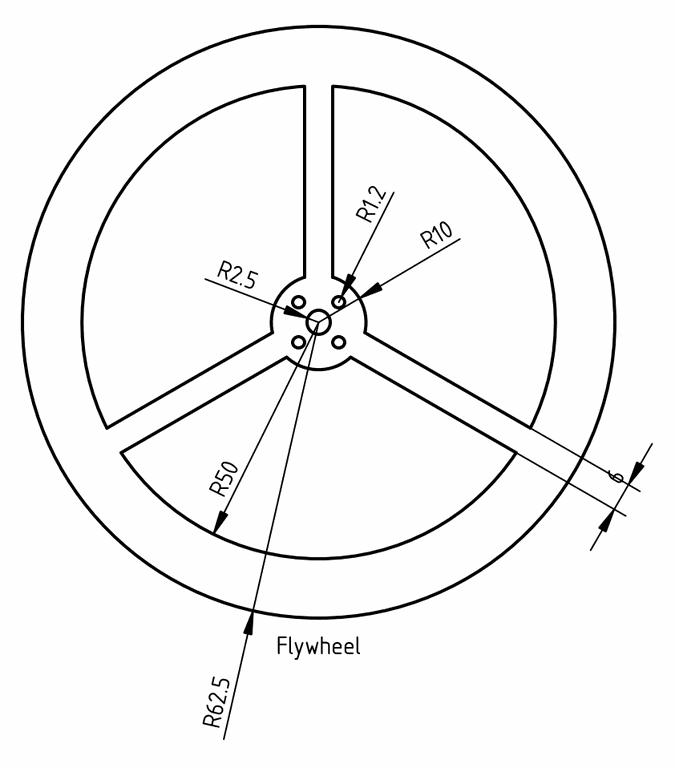
Spinning the Flywheels
The flywheels were attached to small brushless DC outrunner motors, the kind often used for RC planes.
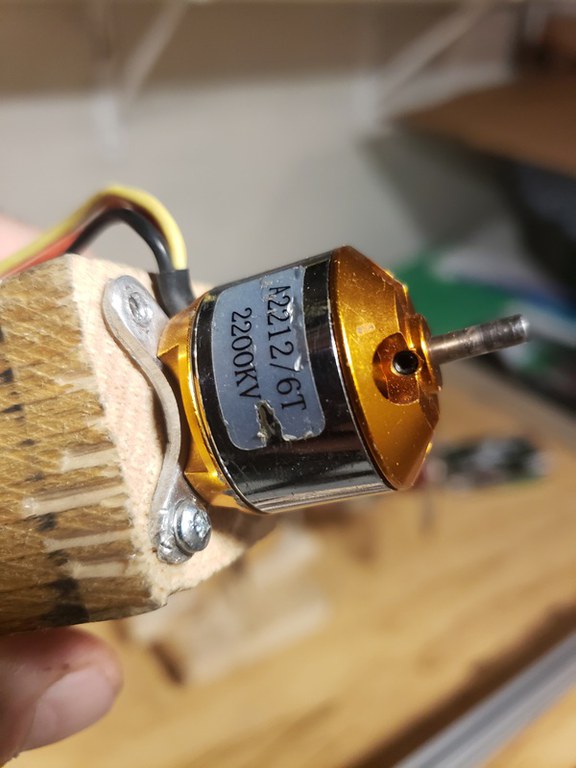
The motors where mounted on the ends of 1 inch by 1 inch by 6 inch wood blocks in a way that allowed them to pivot about 30 degrees vertically.

Rotating the pair of flywheels.
With two such motors with the aluminium flywheels, one on each end of an aluminium box beam we mounted this "carrier" on a shaft with a crown and pinion gear and a third motor so as to rotate them perpendicularly to the flywheels' axes.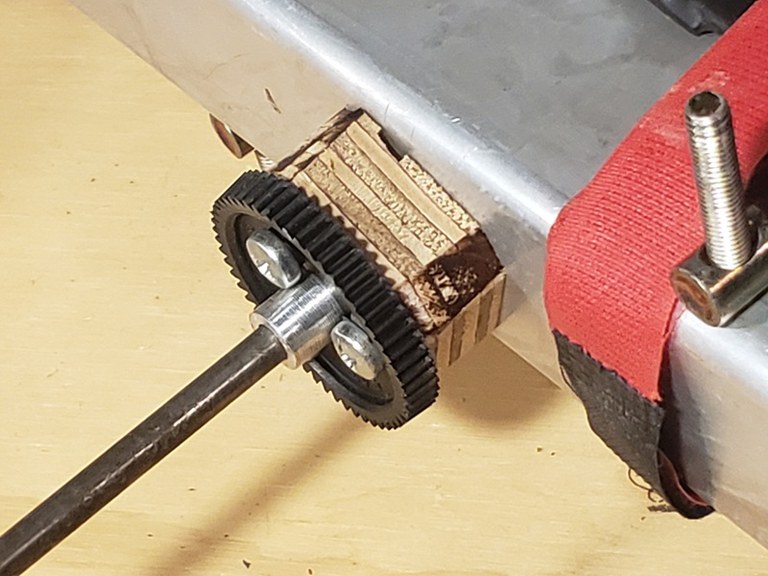
The whole thing was mounted in a wood frame, and a third motor with a crown gear used to rotate the carousel:

First test.
The test rig was run first with the flywheels stationary to set a baseline. As expected, rotating the carrier without the flywheels spinning had absolutely no effect on the weight measured by the scale.
Of great importance to observe was that in this state the device was relatively well balanced at speed. When the flywheels were spun up and the carrier again rotated at a certain threshold the flywheels raised (themselves?) and judging by the sound slowed significantly implying they were under some sort of load.
Equally important to my mind was that I saw no apparent change in weight, but I also couldn't see the scale readout.
A video of the first test can be found here:
I will confess, I had not expected to see apparent weight change. I had, in my mind, built the rig to debunk @Bjorn Lampson 's assertion that there would be. While the test did not appear to me to support the claim, I was very curious as to why the motors seemed to experience a load before the unit "rapidly self disassembled".
Second test.
In order to prevent the flywheels coming off the motor drive shafts they were instead bolted directly to new, larger, lower KV rated motors.

This change included replacing the wooden motor mounts with sheet metal ones.
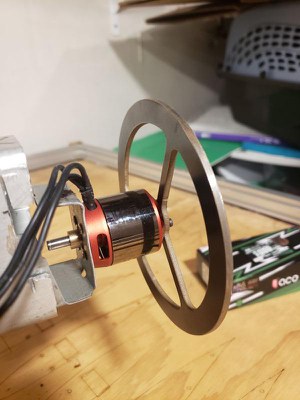
Again, the flywheels and motors were allowed to pivot and lift.

Having replaced the flywheel motors we tried again.
Once again with the flywheels not running the carrier could be rotated with reasonable balance and speed, but when they were spun up the behaviour changed radically. The imbalance was marked. I believe this was due to having too much difference in flywheel speeds.
I felt that this suggested each flywheel was somehow experiencing a different apparent weight.
Third test.
This test got me really excited. I can't help but think there is something going on here worthy of more investigation.

The scale seemed to show a significant reduction in apparent weight. At 40 seconds it appears to be 4.159 lb with the lowest reading of 2.46 lbs at 1.02 seconds. That represents an enormous change in apparent weight.
The test was crude, the readings questionable, but the order of magnitude of this apparent change is mind boggling. Once again I am intrigued and we needed a better test rig.
Modifications were needed.
Next: The Mark II
